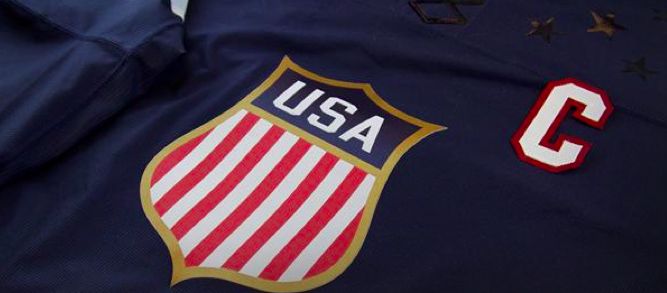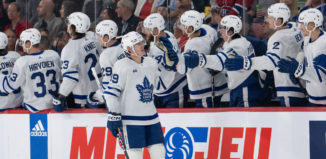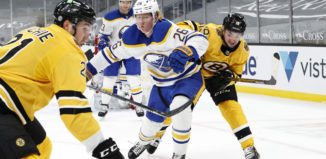USA and Russia Rivalry Continues
(Photo credit: USAHockey.com)
Coming off of their two wins on Thursday, Team Russia having beat Slovenia 5-2 and Team USA having routed Slovakia 7-1 (the most goals scored by a USA team since the 2002 Olympics), both teams came into their game against each other with confidence. However, an Olympic game between Team USA and Team Russia is much more than just a simple hockey game. And while there is no longer a Soviet Union, with their Red Machine that took so many gold medals and beat all-star NHL teams, to say that this morning’s game between the two countries was just another game would be a serious understatement.
Though both teams are dramatically different—the rosters being filled with NHL players as opposed to college kids and Russian Army men—it is impossible to keep from comparing this game to that Miracle on Ice game played in Lake Placid in 1980 between the two countries. For Team USA that improbable team of college kids who managed to defeat a team almost ensured of a gold medal basically helped put hockey on the map for the United States. It is from that miraculous game that some of those now playing for the Red, White and Blue, got their first itch to put on a pair of skates and pick up a hockey stick. For Team Russia, playing in their home country, in front of a president who is a huge hockey fan, and who had a hand in selecting the head coach of the team—Zinetula Bilyaletdinov, who played for the USSR against Team USA in the surprising 1980 loss—it is no doubt that the pressure is high.
For many hockey fans across the world it sounded more like an NHL game being called with all the names being familiar, though on unfamiliar lines, and even the announcers recognizable. But this was anything but an ordinary game and there was much more than two points on the line for both teams.
Despite President Vladimir Putin’s comments that this would be a good test to show the rest of the world that the Kontinental’naya Hokkeynaya Liga (KHL) was a strong team on par with the NHL, there are only nine players on Team Russia who come from the KHL. The remaining 16 players are all active players on NHL teams.
From the players point of view, their familiarity with each other either as teammates on NHL teams or as opponents during the NHL season, they perhaps have an advantage on each other as opposed to some of the other teams that are not as NHL-heavy. The emotions were seen quickly, with “introductions” being made, much as fans see throughout the hockey season. However, that opportunity to represent your country in competition brings an entirely different emotion to the surface. Each shift means a little more. Each win is felt with a little more elation, while each loss hurts all the worse. And perhaps for those of Team USA, the support of the fans being primarily for Russia—complete with some of the loudest fans in a hockey arena—was perhaps a little noticeable. Cheers for Russia alternated with “Get the puck” (шайбу – prounounced “shaybu” in Russian) whenever Team USA had the puck.
In the goals that were scored during regulation for Team Russia, both were attributed to Pavel Datsyuk (Detroit Red Wings), with first assist in both goals listed as Andrei Markov (Montreal Canadiens), and the second assist for Datsyuk’s first goal going to KHL’s Alexander Radulov (CSKA Moscow).
Of the four goals scored during regulation, three of them would be scored on power plays, showing how important that man advantage could be. Team USA would be called for six penalties in regulation, while Team Russia would take five. Russia would go 1-6 on the power play whereas the USA would go 2-5.
During the eight-round shootout that was necessary to establish a winner of this game, Team Russia would go with: Yevgeni Malkin (Pittsburgh Penguins), Datsyuk, and Ilya Kovalchuk (who left the New Jersey Devils to play for KHL’s SKA St. Petersburg this season).
There are some who will point to the disallowed Russian goal at the end of the third as a potential “questionable” tactic by Team USA’s goalie Jonathan Quick of the Los Angeles Kings—the goal was disallowed because the net became dislodged well before the play) as the real win of the game. However, the confidence of the goalies for both teams (Russia chose to start Sergei Bobrovski of the Columbus Blues Jackets) was evident throughout the game and carried over into the shootout.
And while much of the United States is currently calling shootout winner T.J. Oshie (St. Louis Blues) a hero, he has shown once again why hockey players are so well loved when he responded that the real heroes wear camo, referring to those in the military.
Team USA will play Team Slovenia on Sunday, February 16 and Team Russia is set to meet Slovakia in a match on also on Sunday. Though it would be easy to to say both teams will win, neither team should underestimate their underdog.














